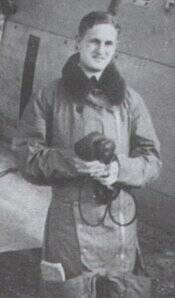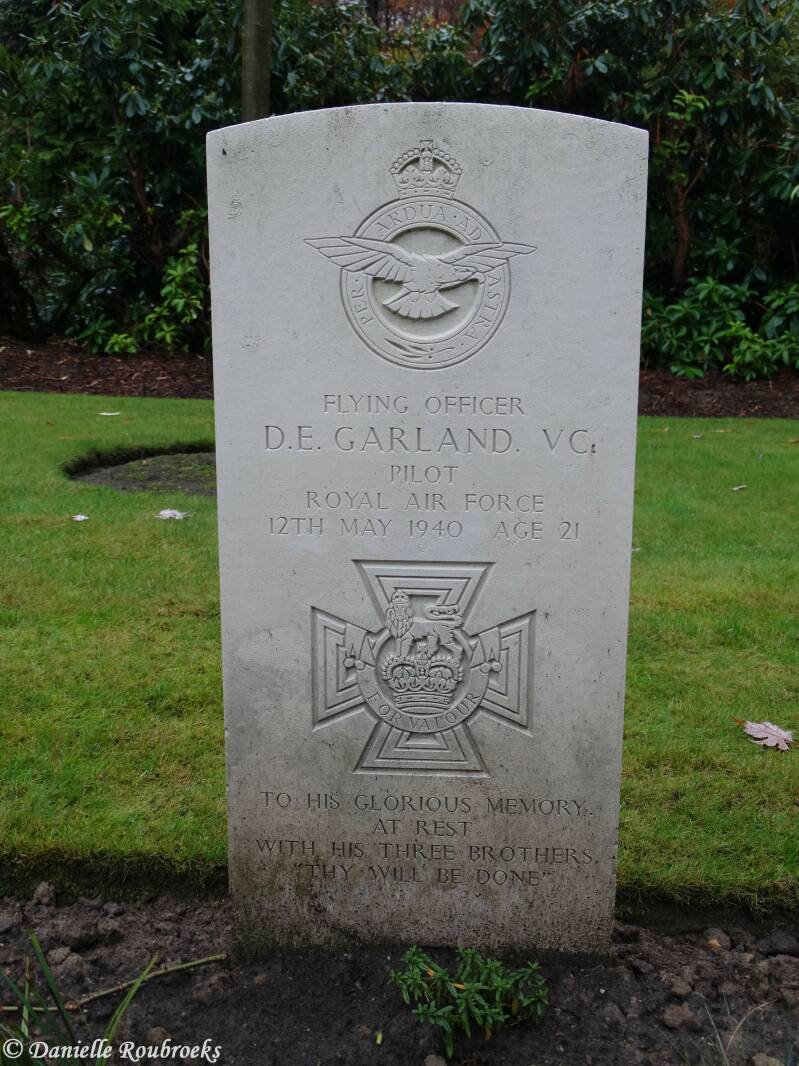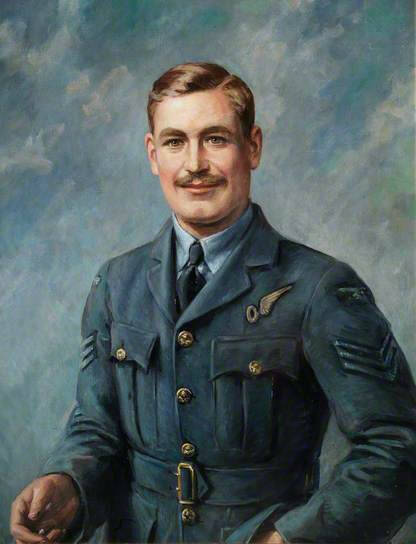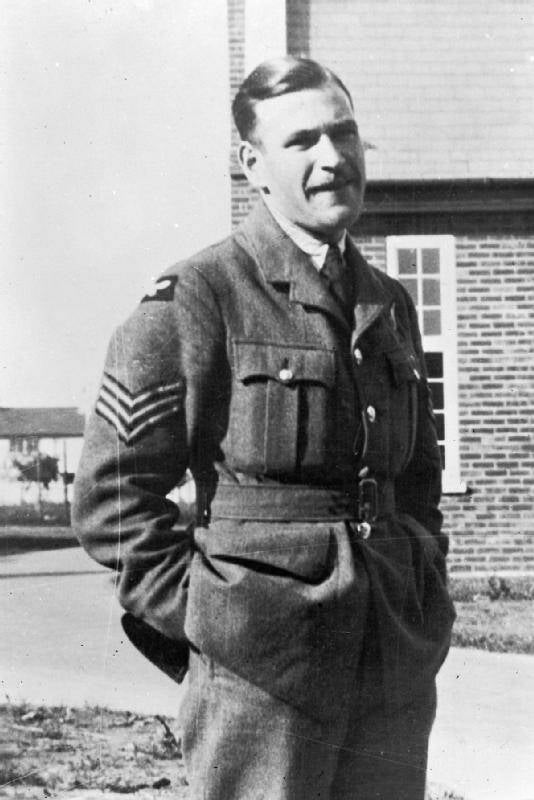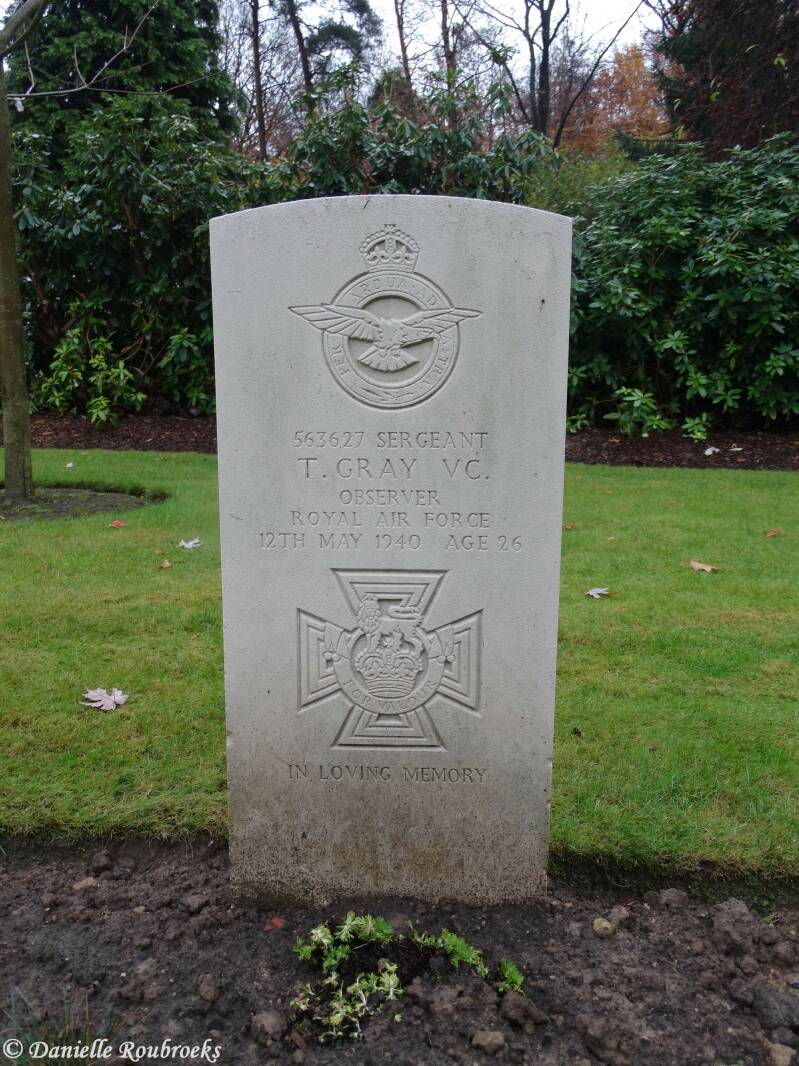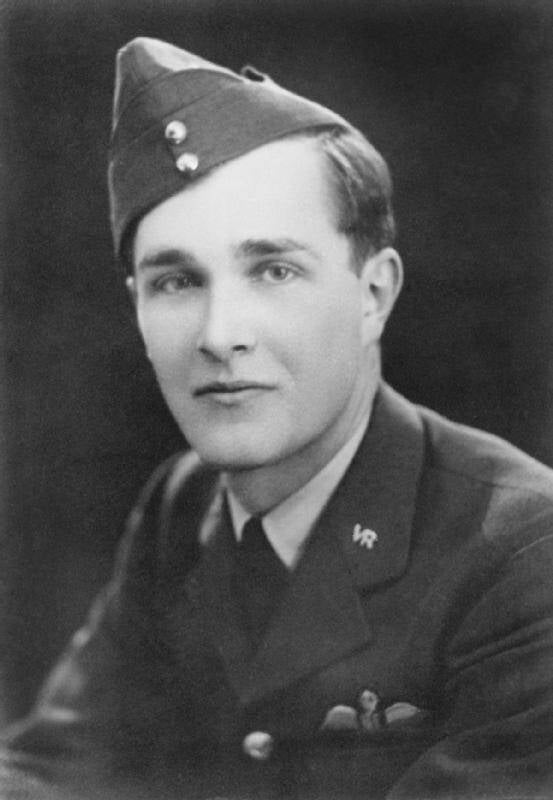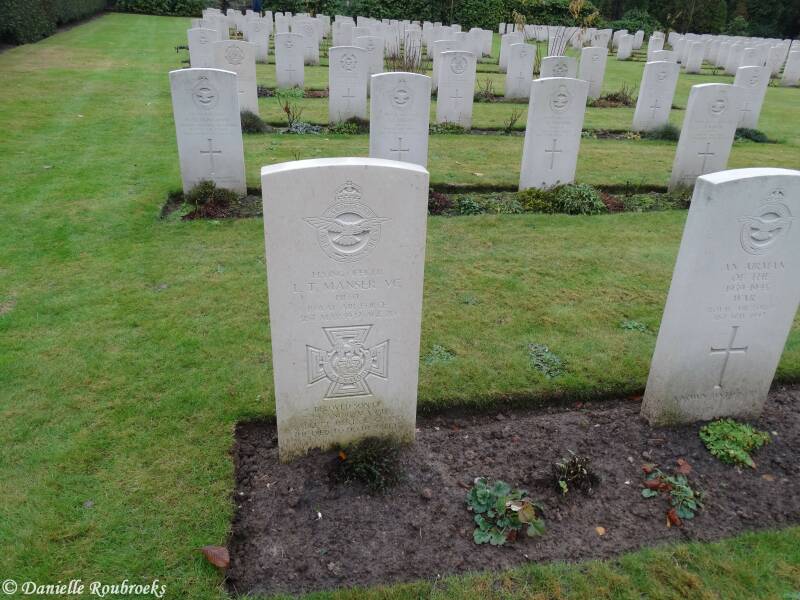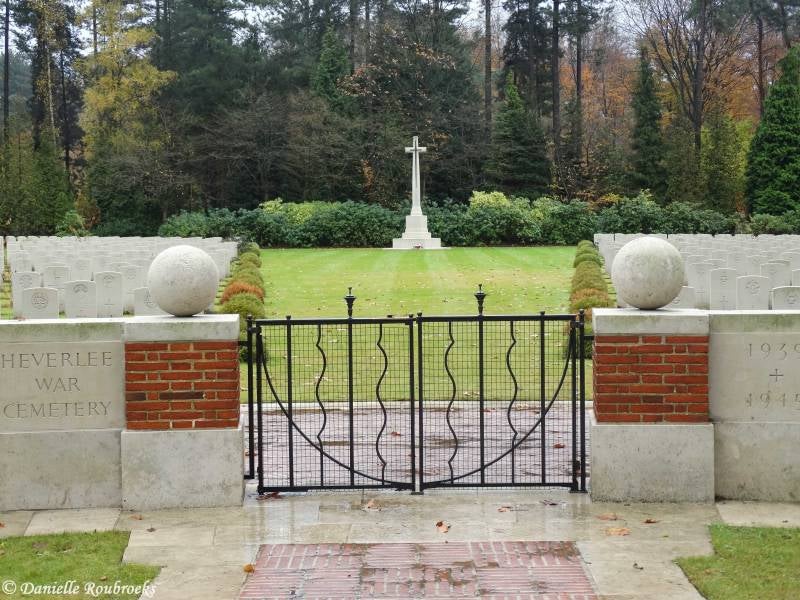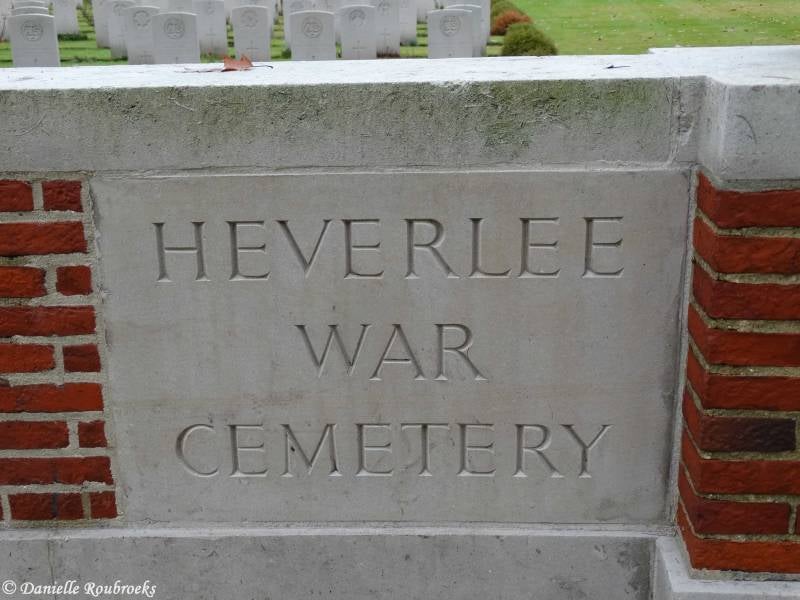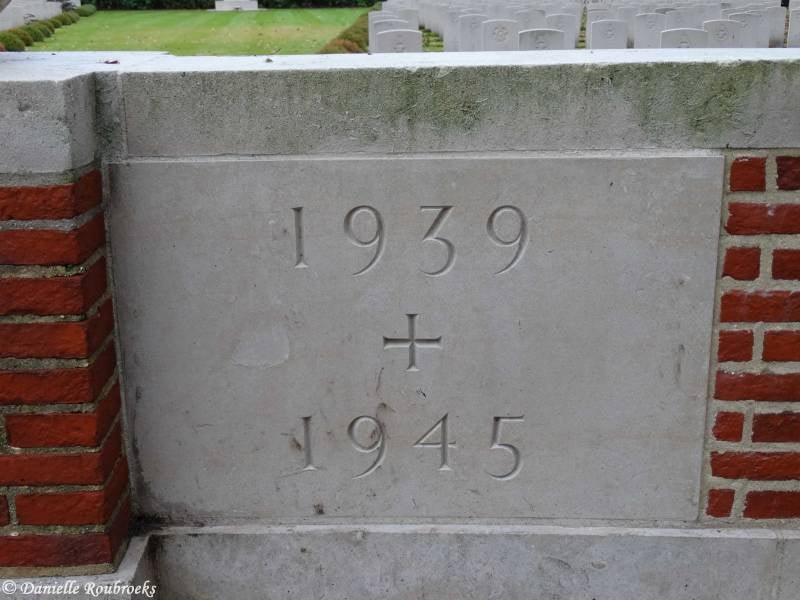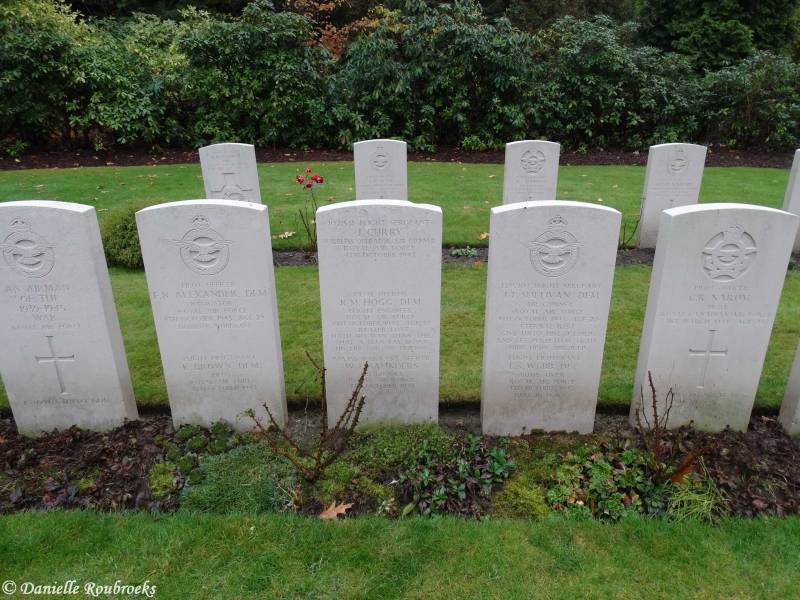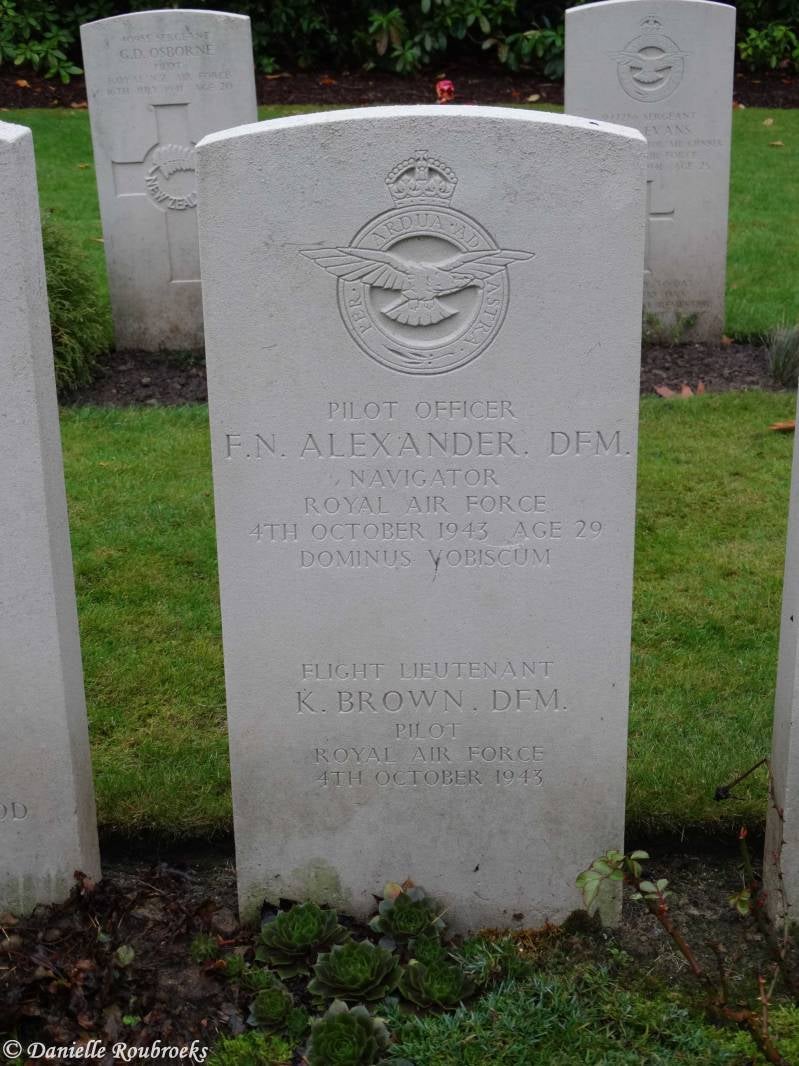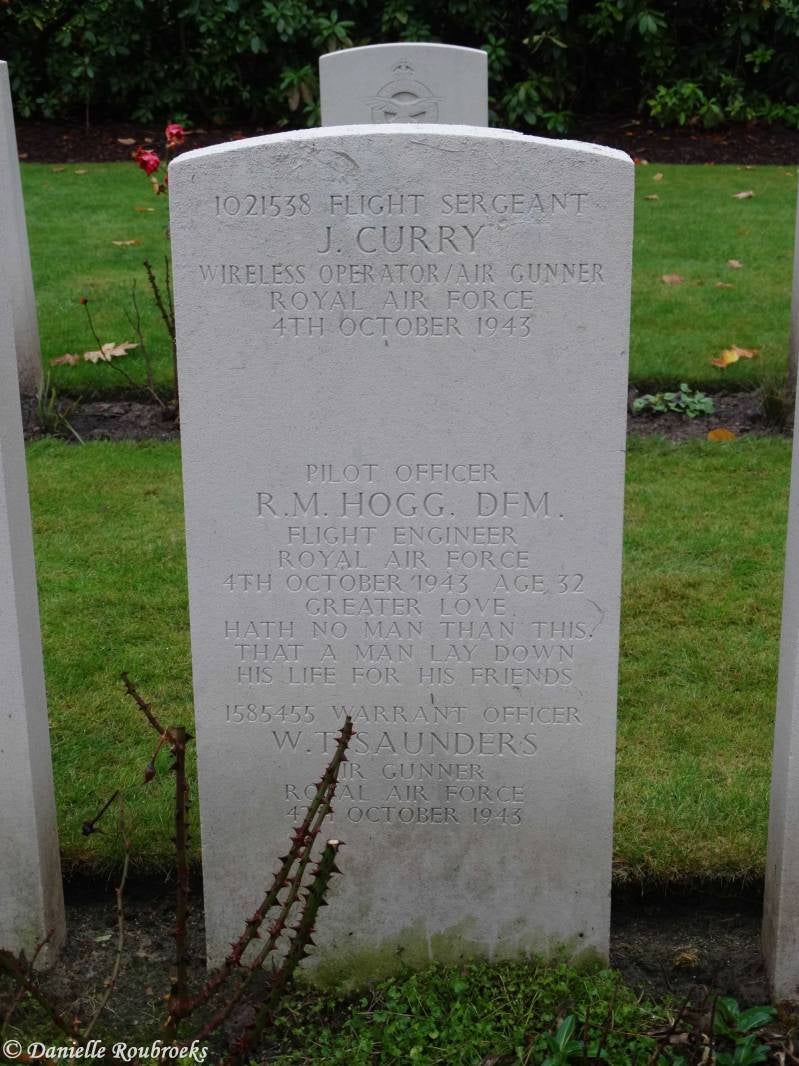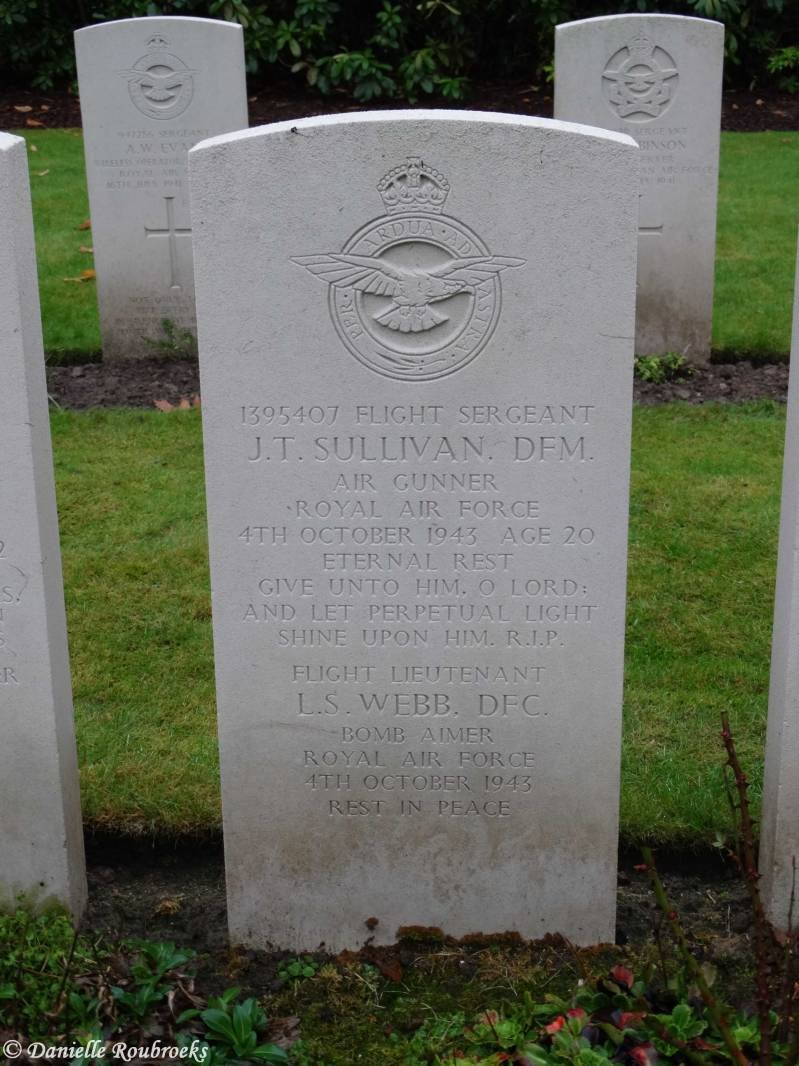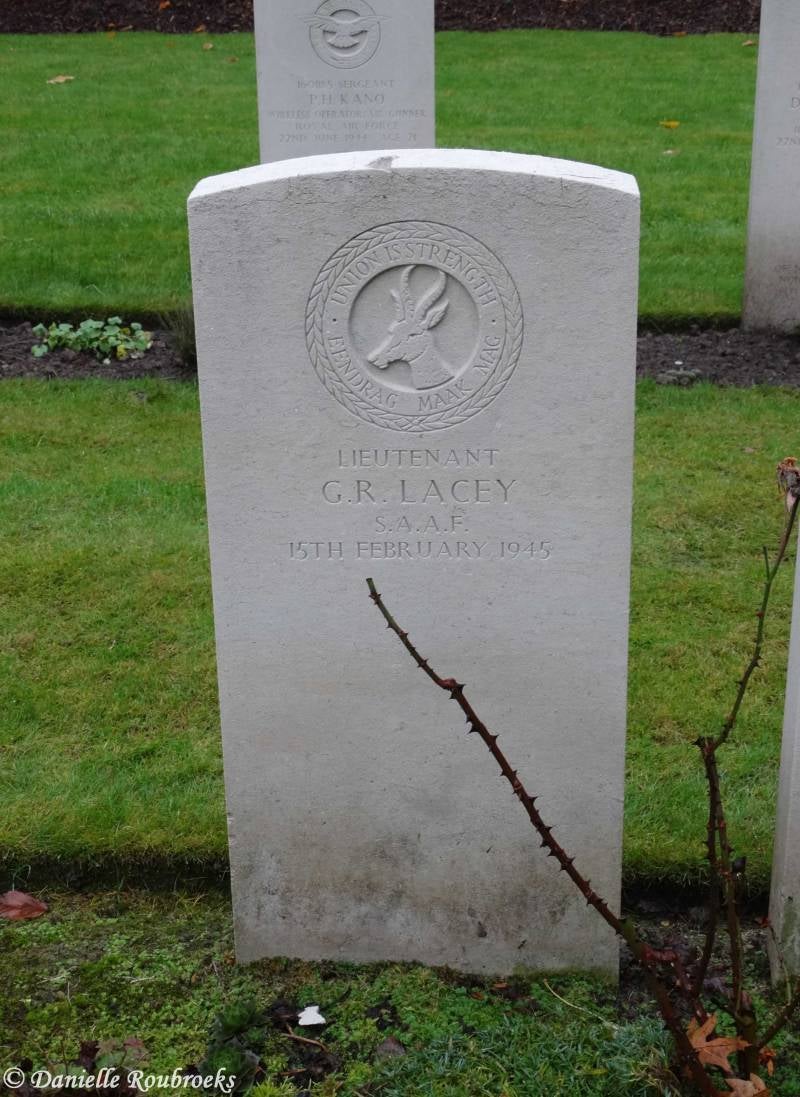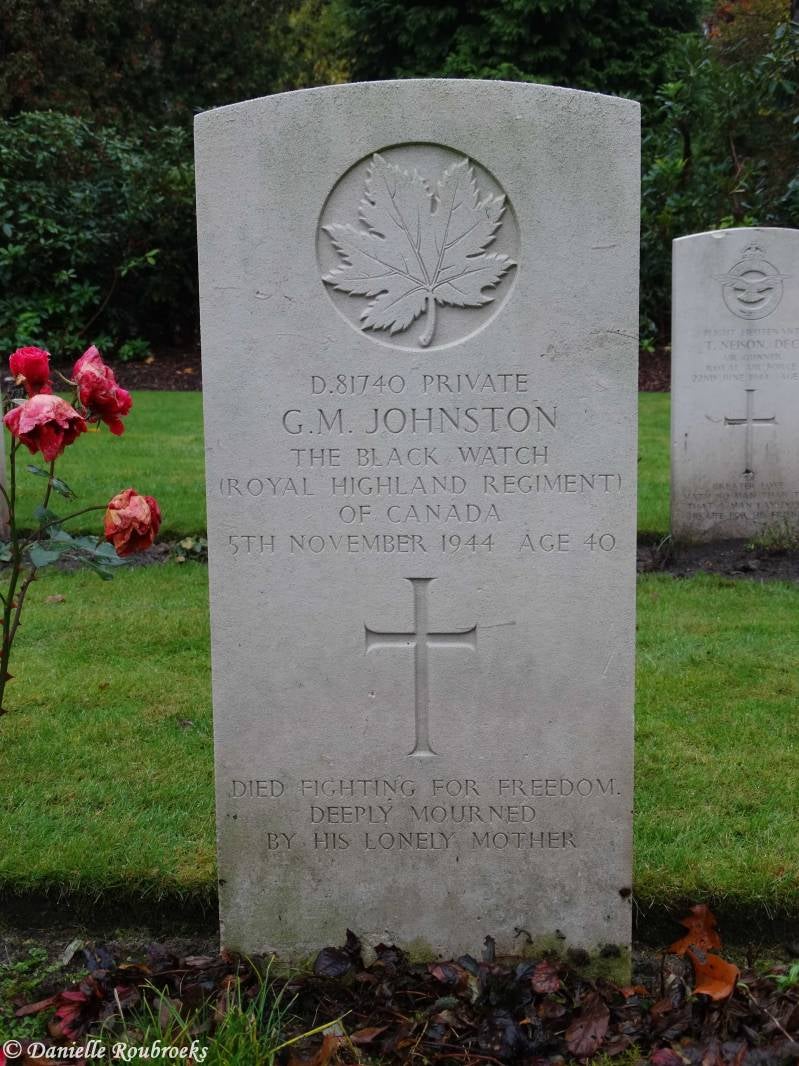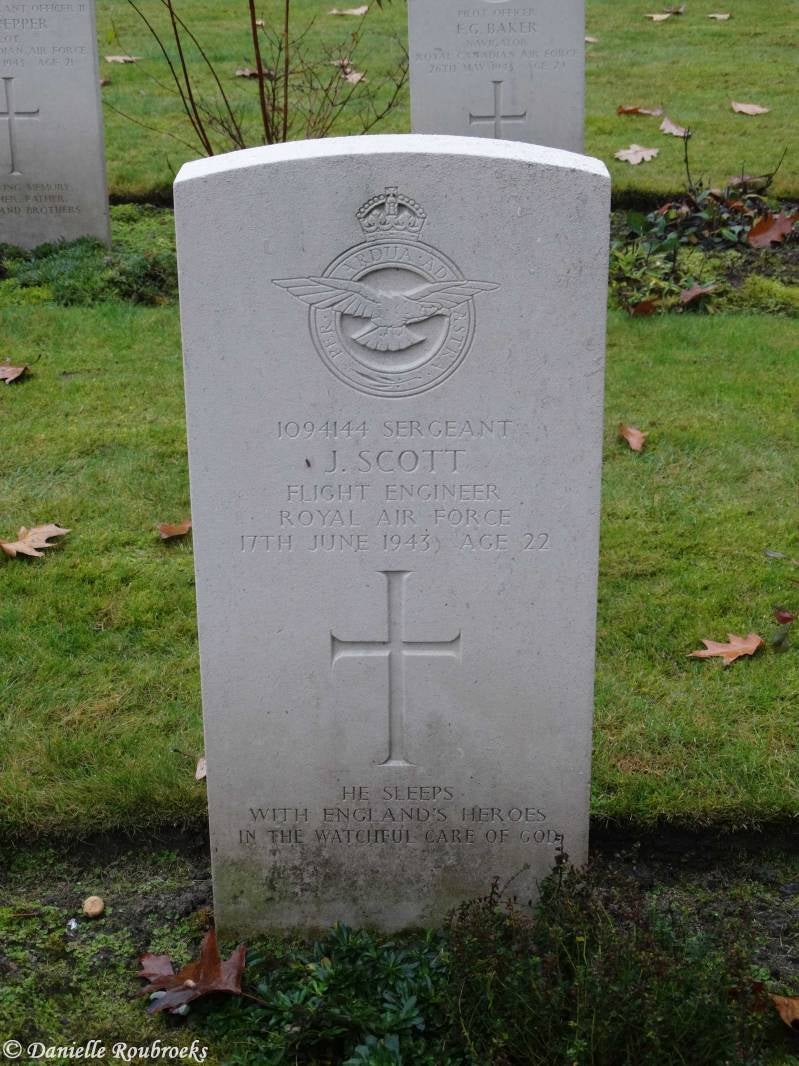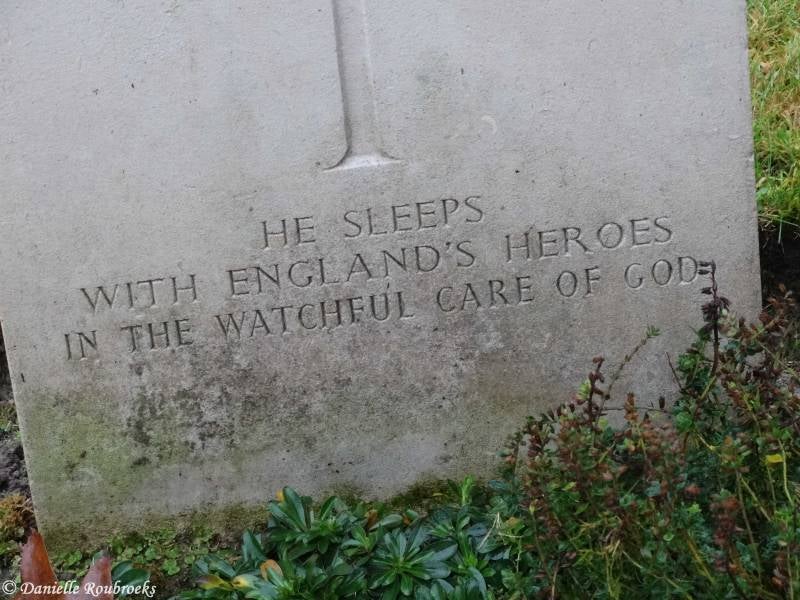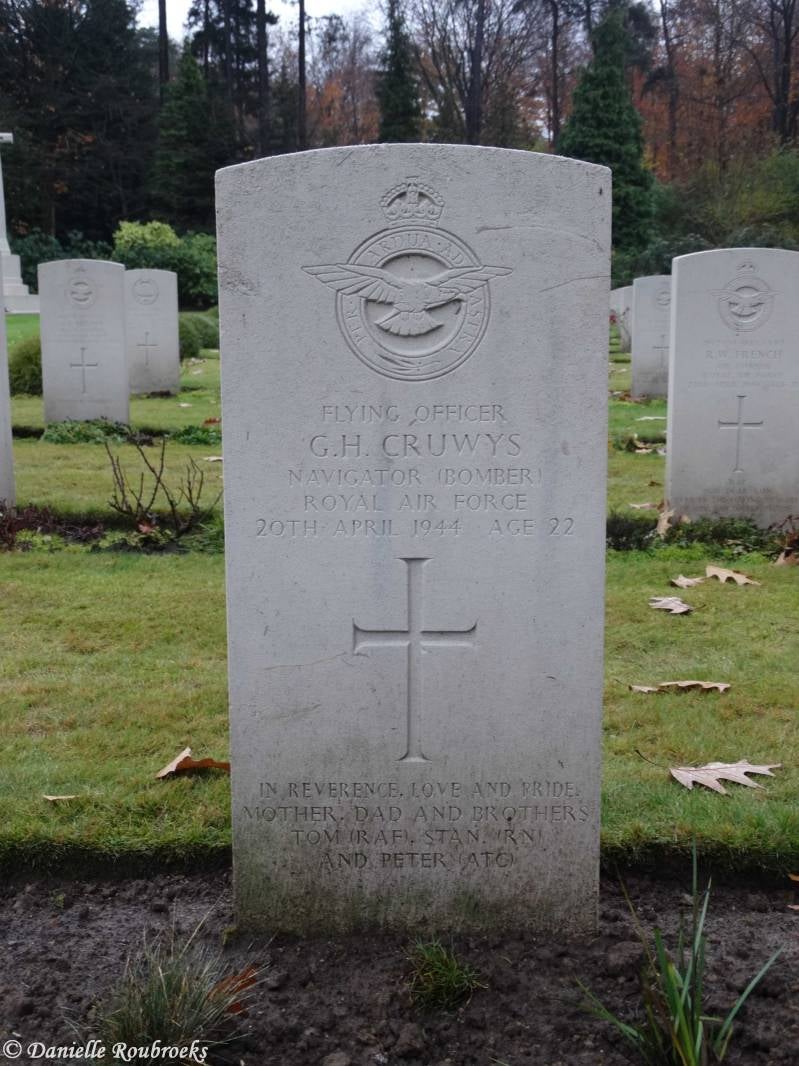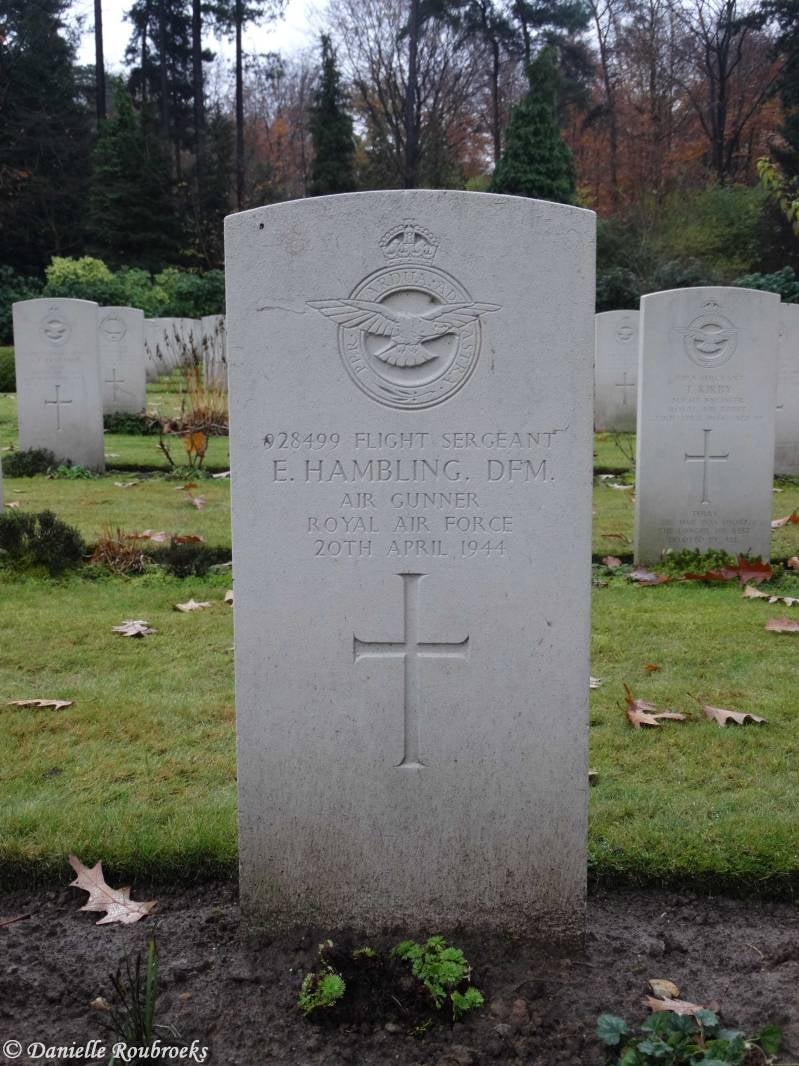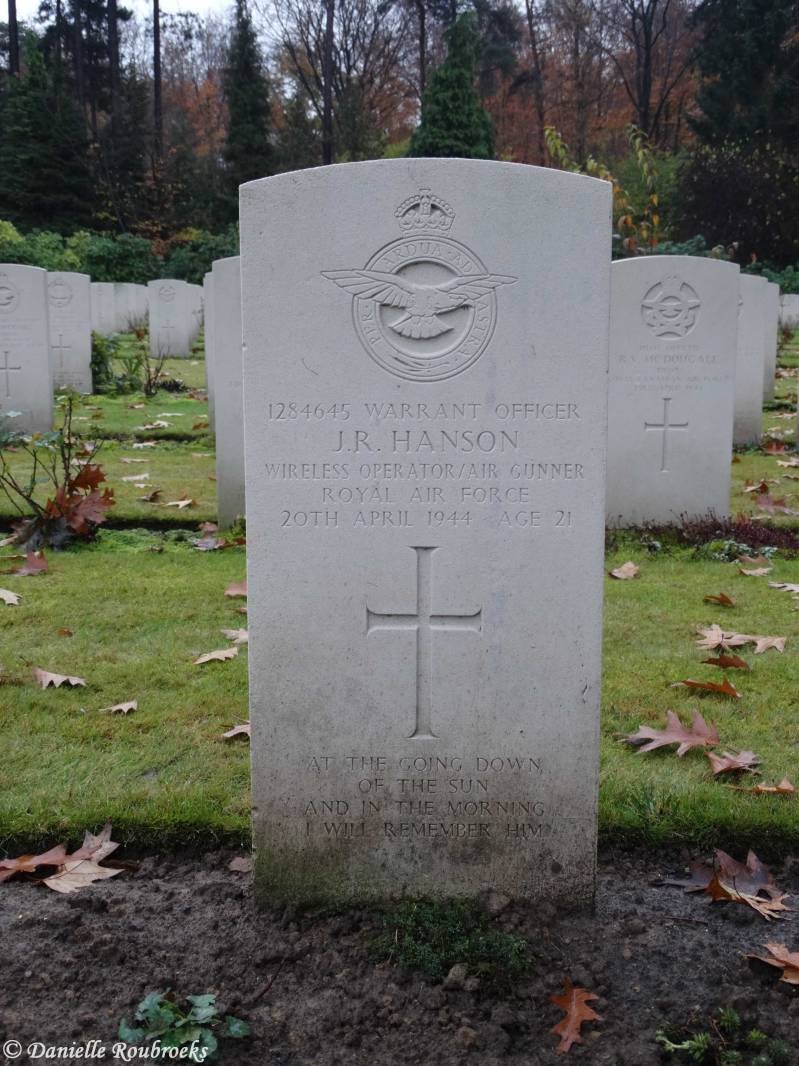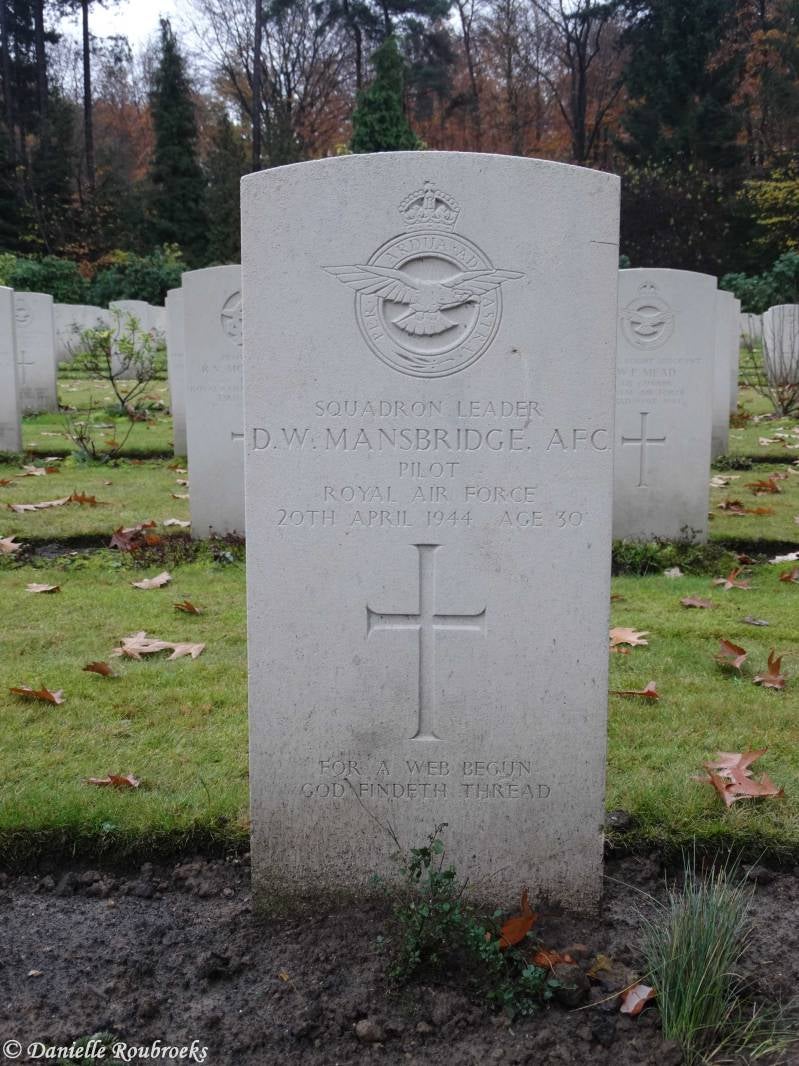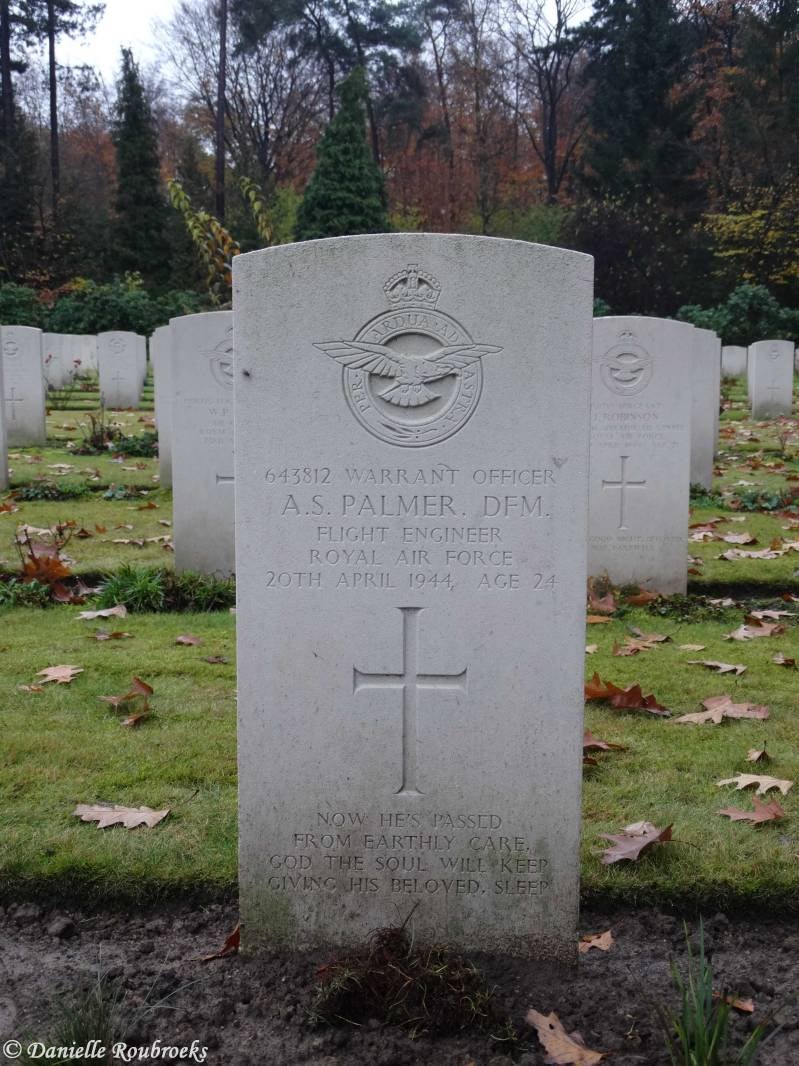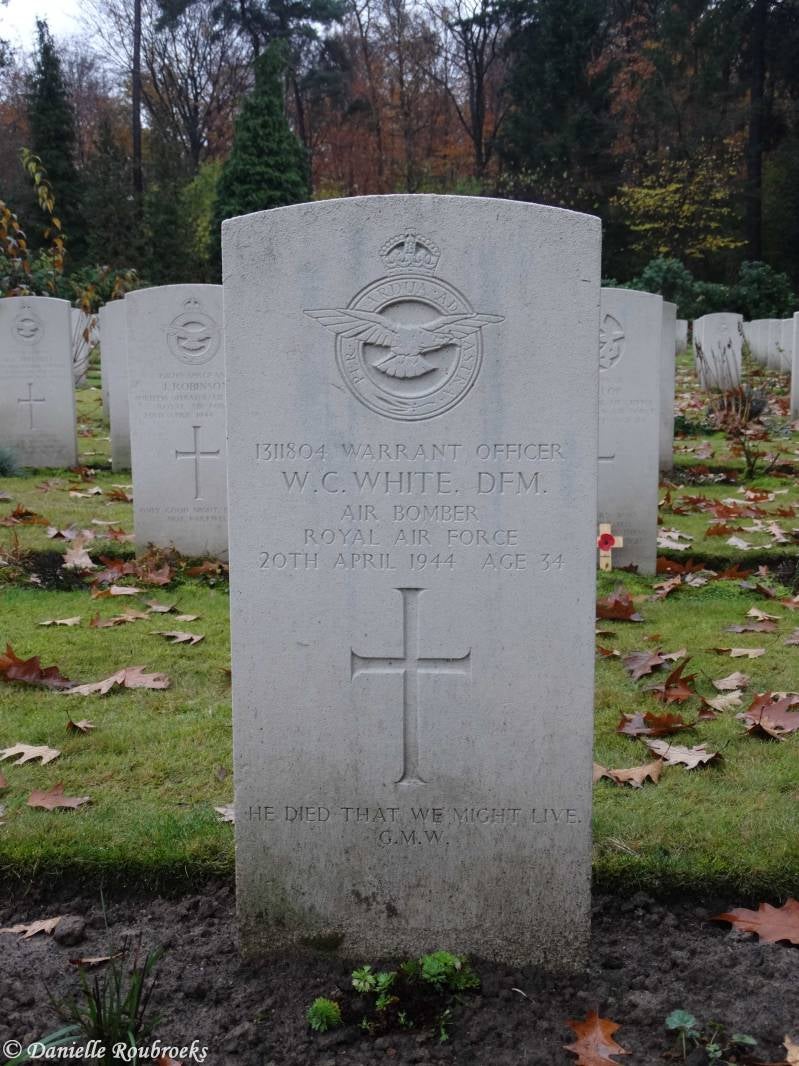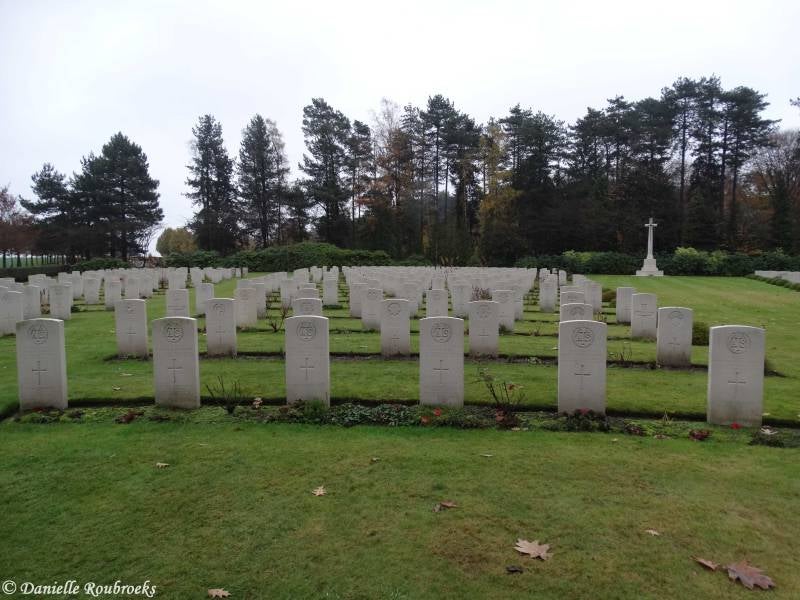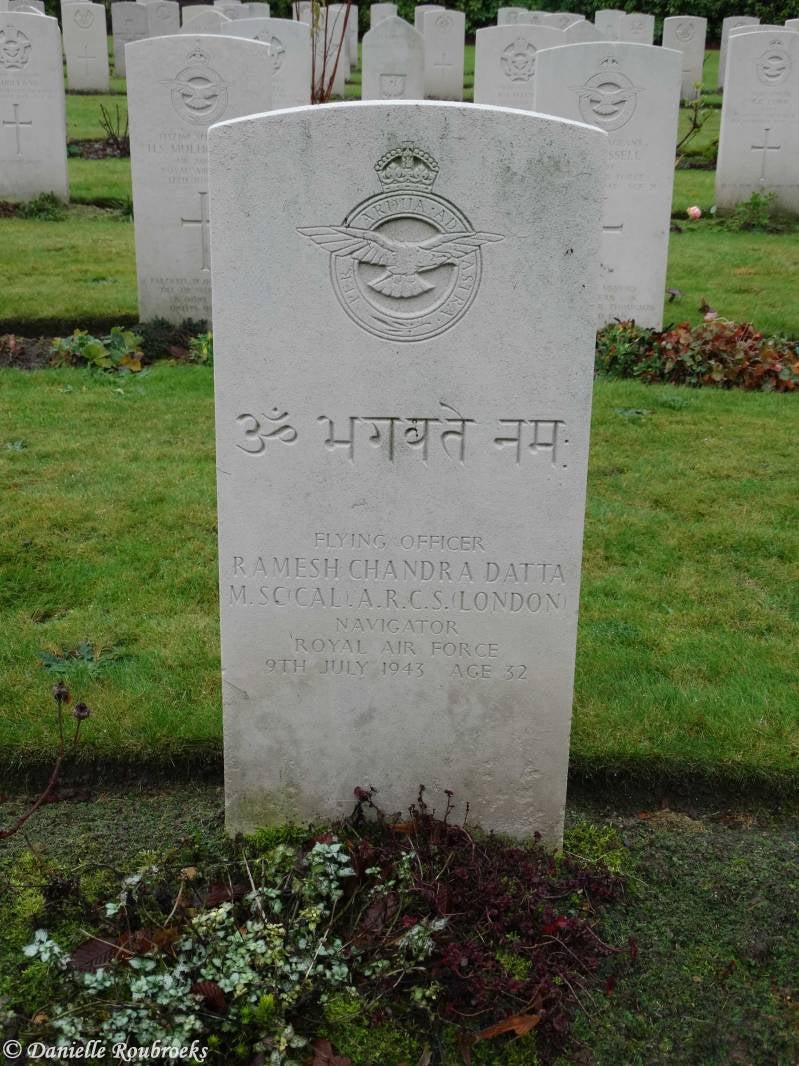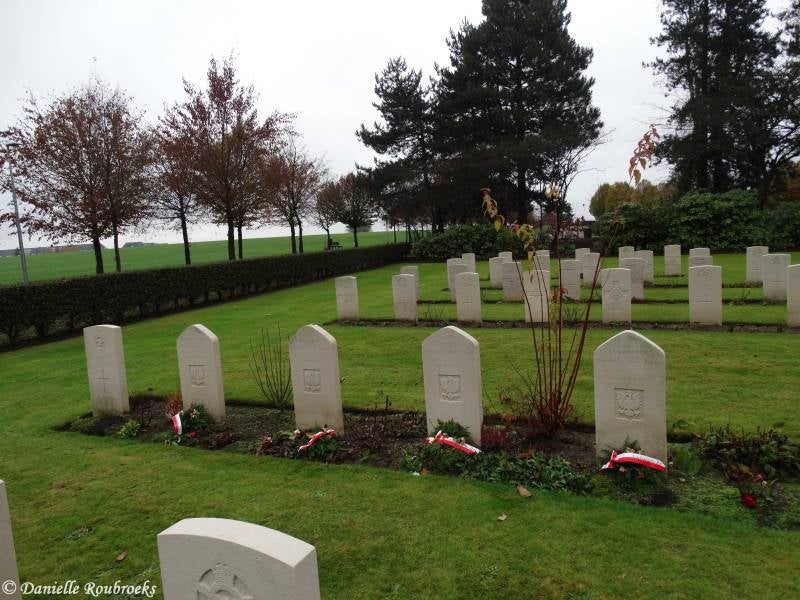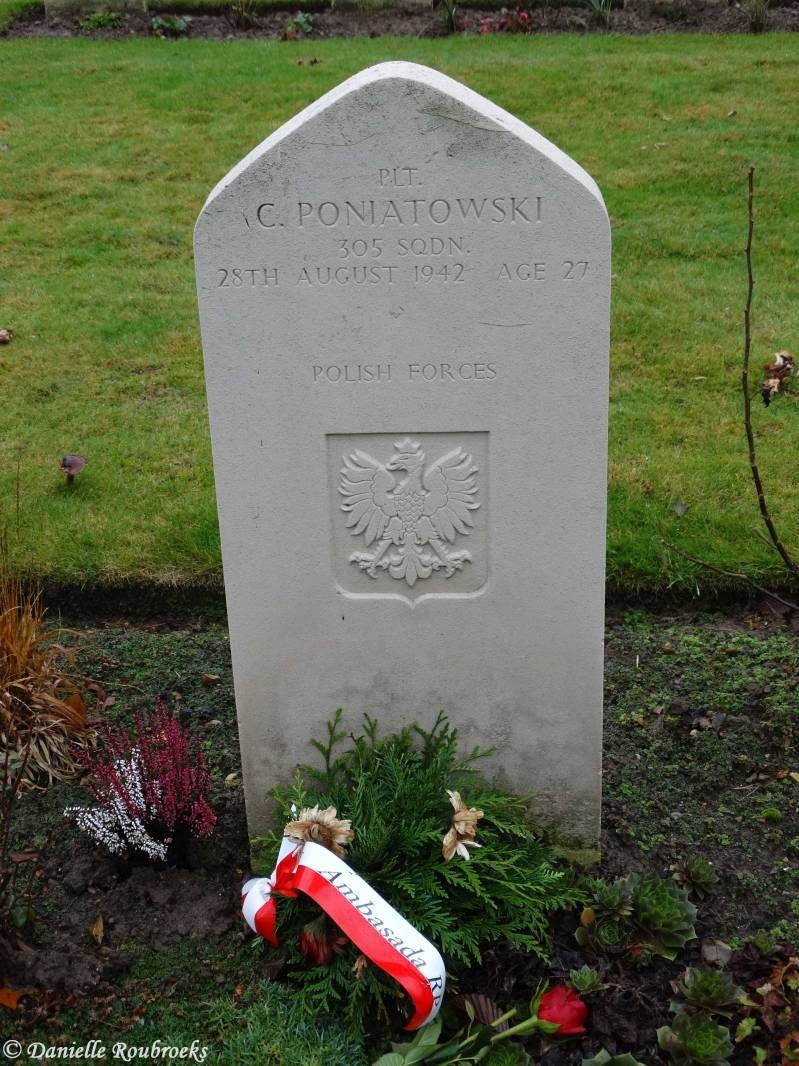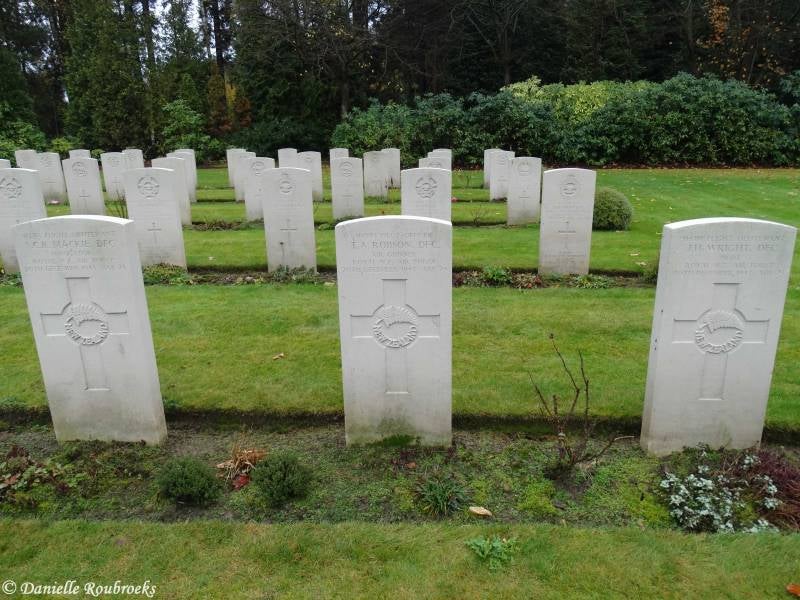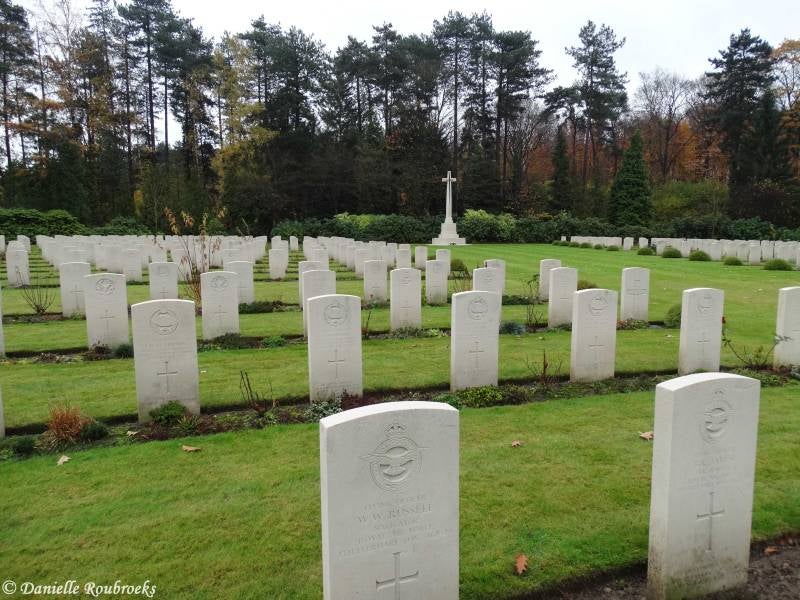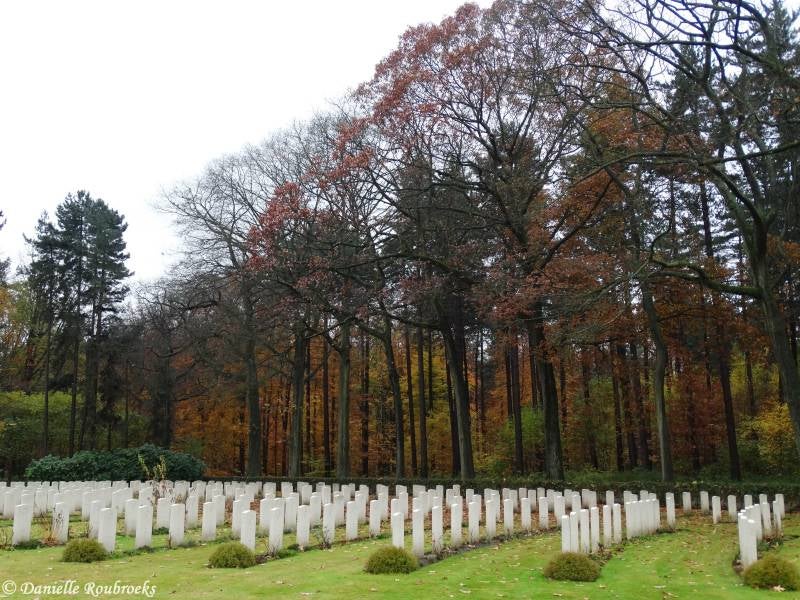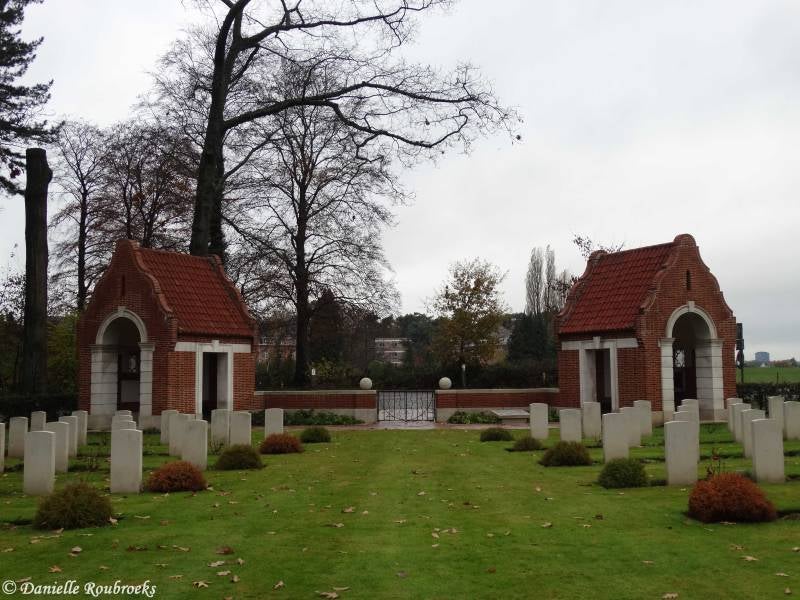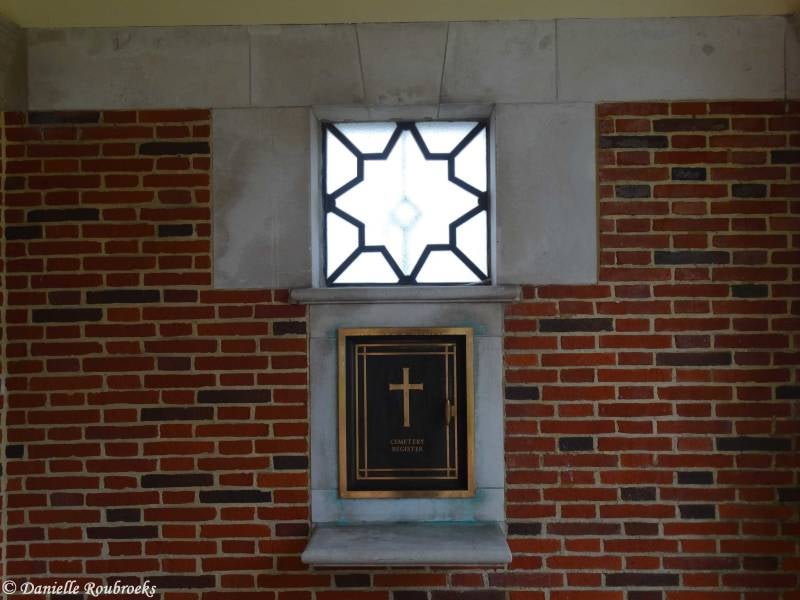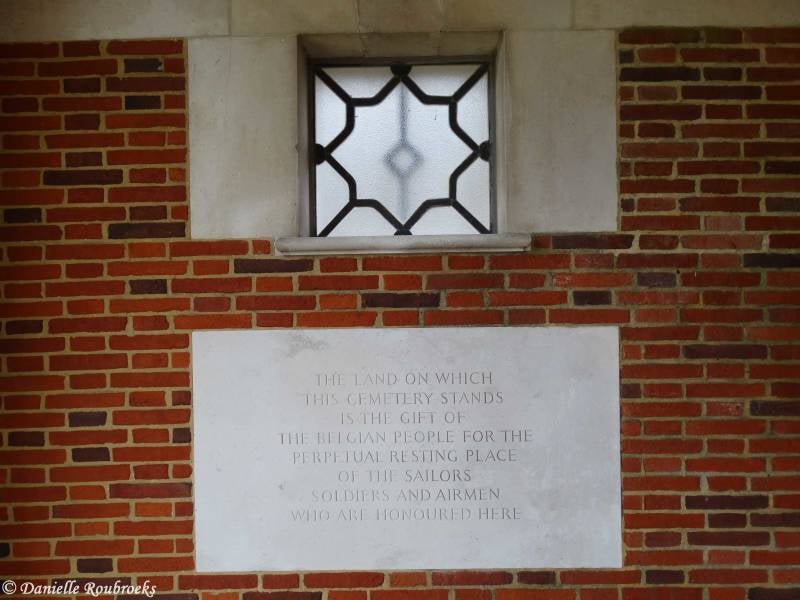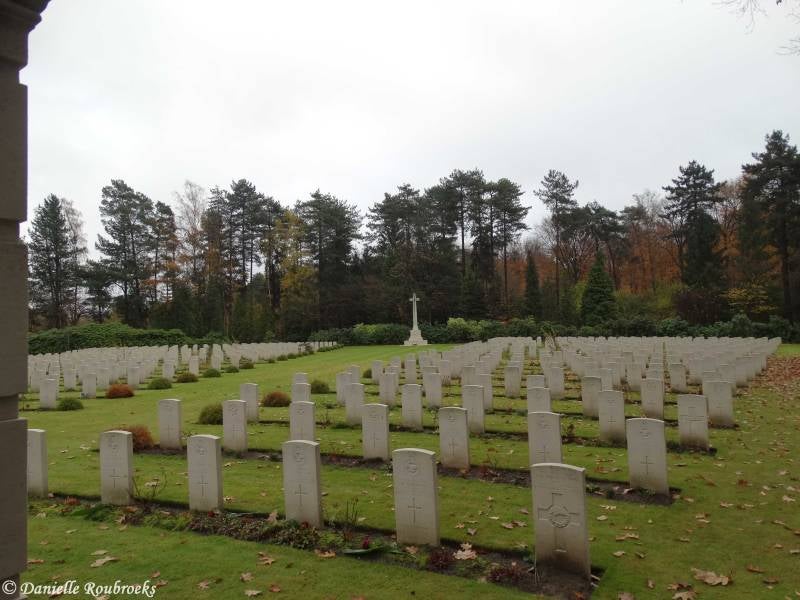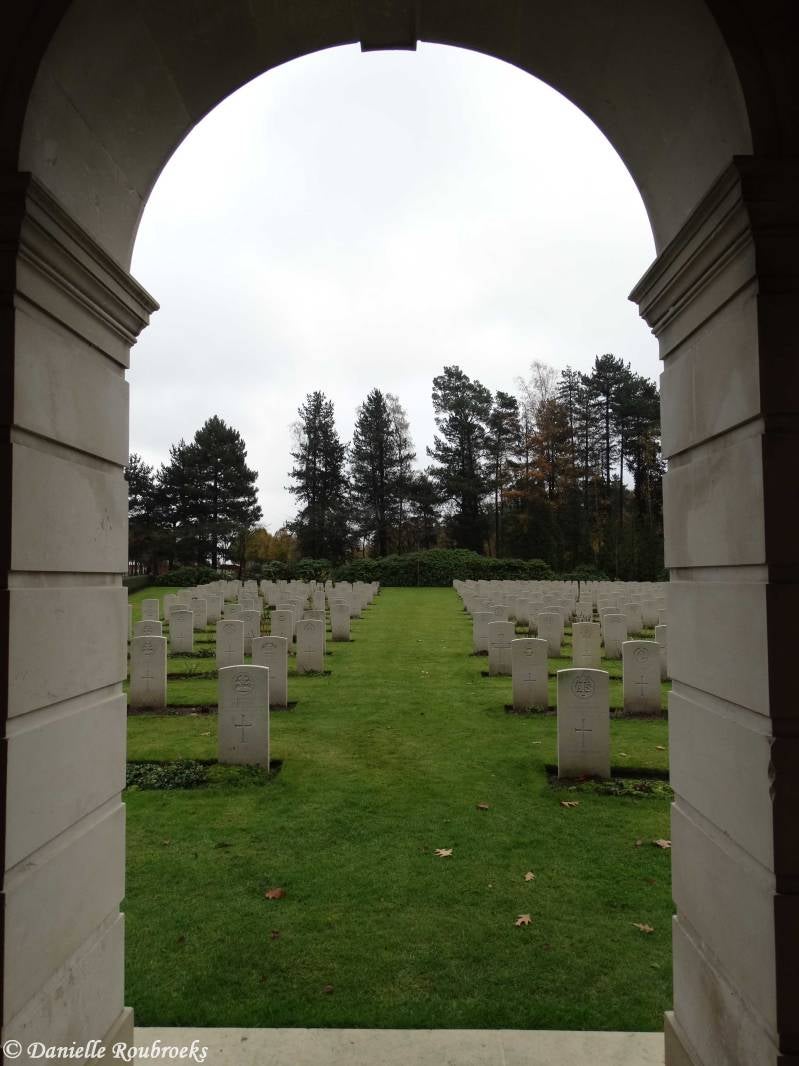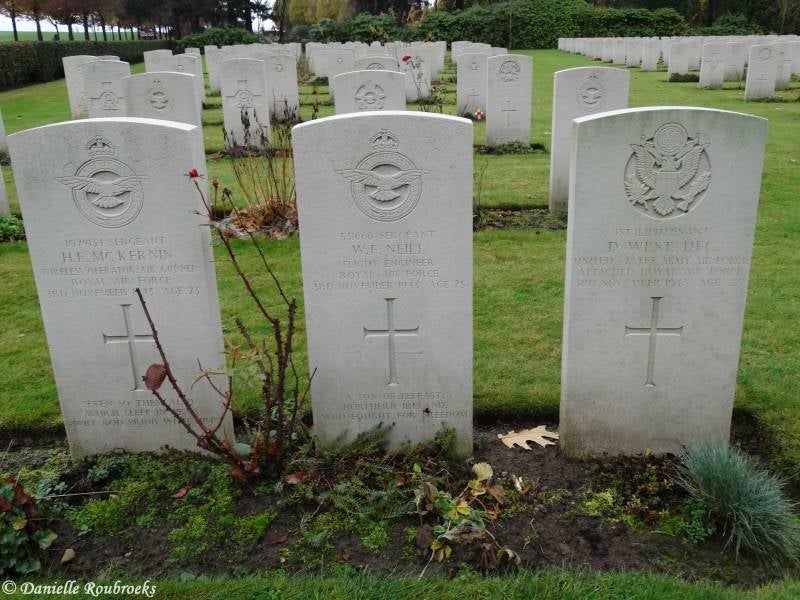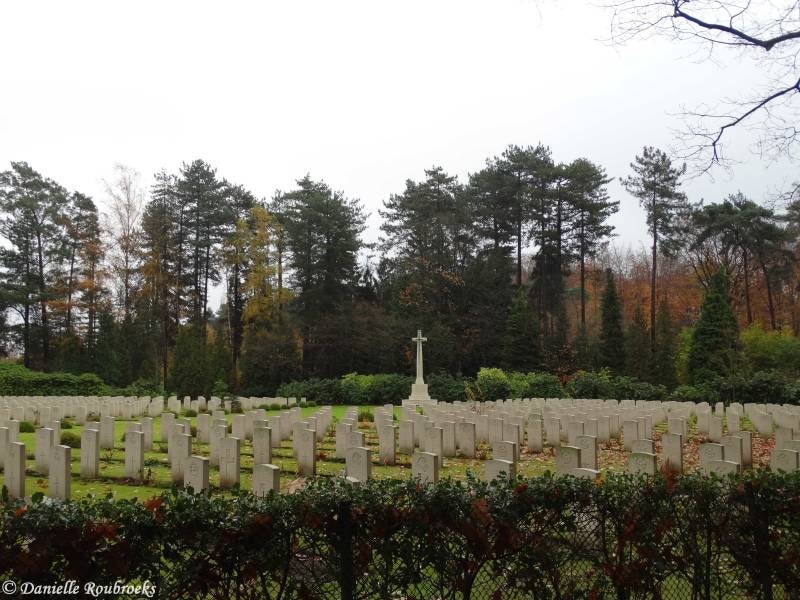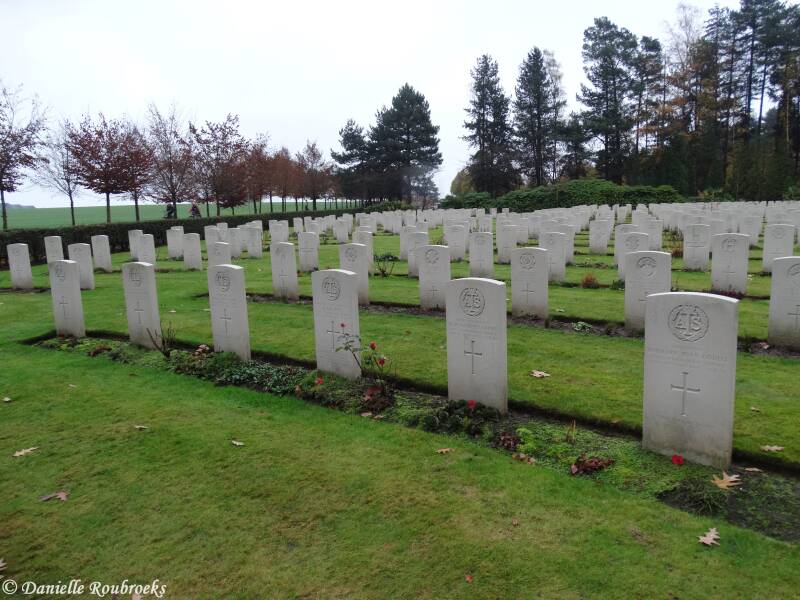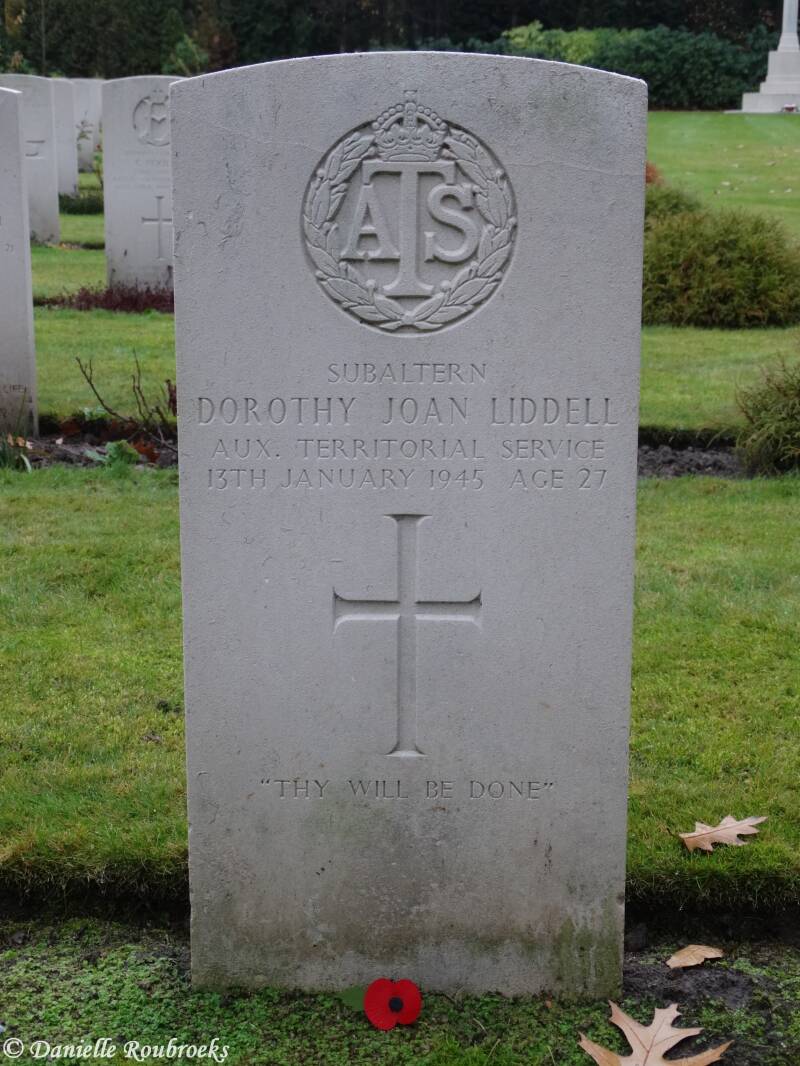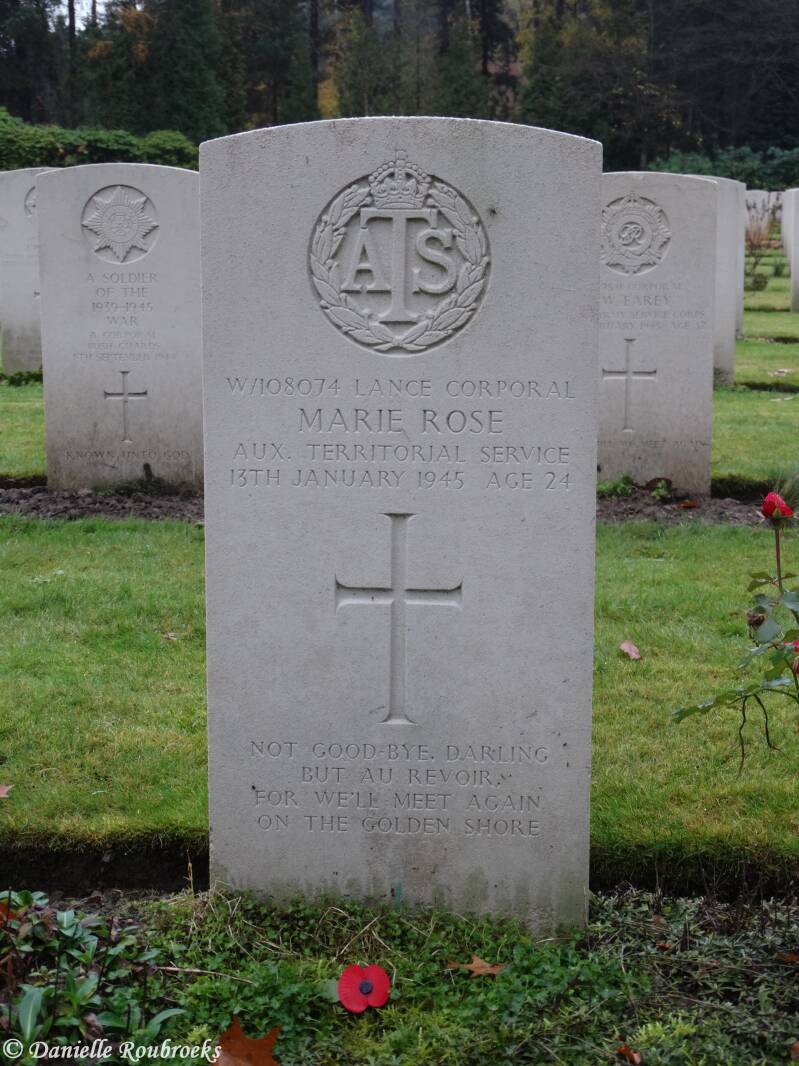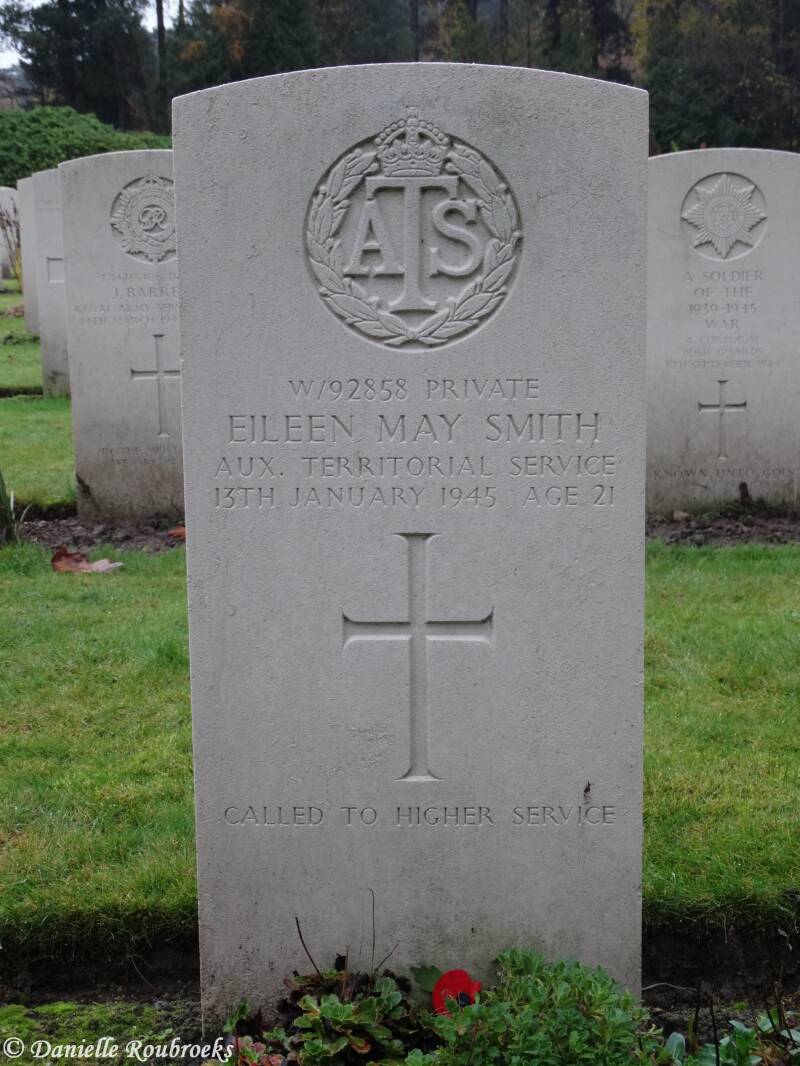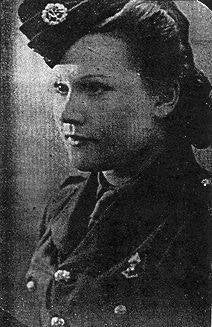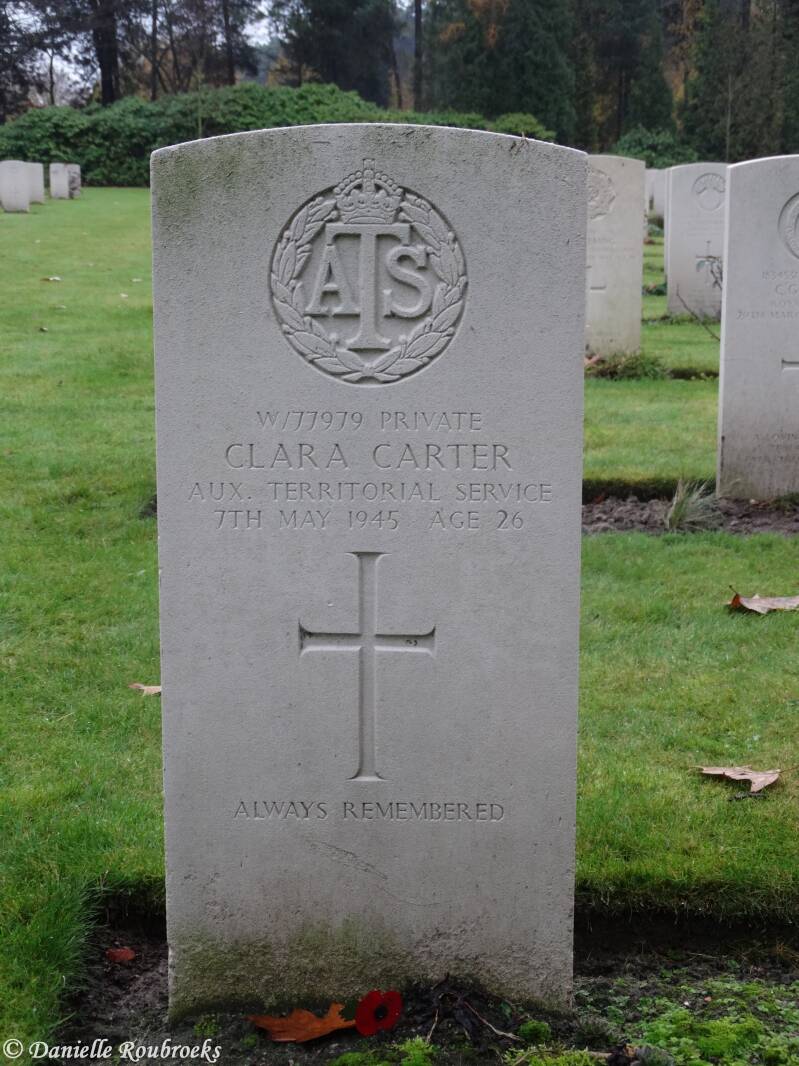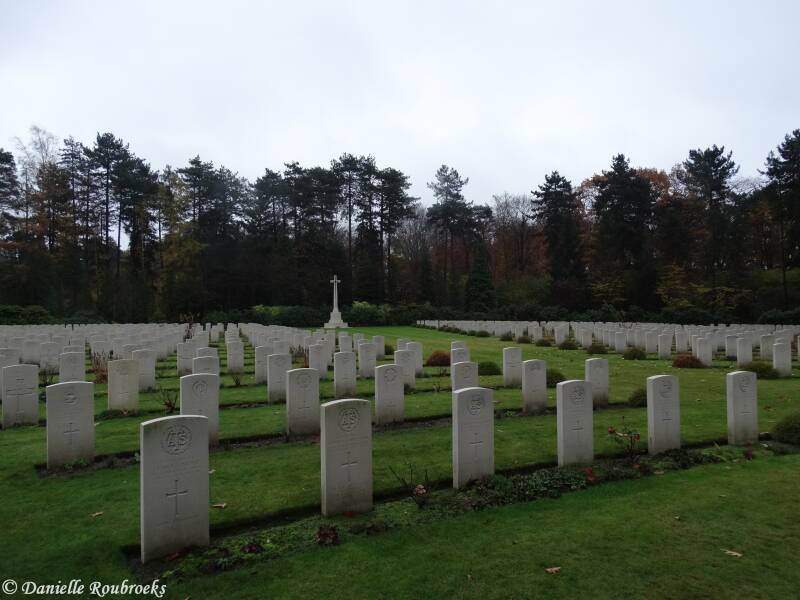Heverlee War Cemetery
History Information (Source: CWGC)
The British Expeditionary Force was involved in the later stages of the defence of Belgium following the German invasion in May 1940, and suffered many casualties in covering the withdrawal to Dunkirk. Commonwealth forces did not return until September 1944, but in the intervening years, many airmen were shot down or crashed in raids on strategic objectives in Belgium, or while returning from missions over Germany. The original burial ground at Heverlee was on the opposite side of the lane. It was used after the liberation for burials from the 101st British General Hospital, which was then housed in Heverlee Girl's School close by. In July 1946, the present cemetery was started and was used for burials brought in from a wide area round about.
The cemetery now contains 977 Commonwealth burials of the Second World War, 37 of them unidentified. There are also 29 First World War burials which were brought into the cemetery from Wetteren Communal Cemetery, Gouvy Churchyard, Linerle, Uccle Communal Cemetery, Boneffe Churchyard, Luttre Communal Cemetery, Anderlecht Communal Cemetery, Sclayn Communal Cemetery, Tubize Communal Cemetery and Gerozstein German Military Cemetery, where their security and maintenance could not be guaranteed. In addition to the Commonwealth burials, the cemetery also contains the graves of one American and 11 Polish airmen.
The cemetery was designed by P.D. Hepworth.
Served with
- United Kingdom (750)
- Canadian (158)
- Australian (45)
- New Zealand (17)
- Polish (11)
- American (1)
- South African (1)
Served in
- Air Force (723)
- Army (260)
VICTORIA CROSS
Flying Officer Donald Edward GARLAND - 40105 - 12 Sqdn. Royal Air Force
Died 12 May 1940 Age 21
Country of Service: United Kingdom
Awards: Victoria Cross
Citation
The citation in "The London Gazette," for 11th June, 1940, gives the following details : Flying Officer Garland was the pilot and Sergeant Gray the observer of the leading machine of a formation of five aircraft that were ordered to destroy at all costs a bridge over the Albert Canal which had not been demolished by the land forces and was allowing the Germans to advance into Belgium. In spite of very heavy defence of the area surrounding the bridge, the formation made a successful dive-bombing attack from the lowest practicable altitude, after releasing their bombs they were attacked by a large number of enemy fighters. Only one aircraft of the five returned to its base. Much of the success of the operation must be attributed to the formation leader, Flying Officer Garland, and to the coolness and resource of Sergeant Gray, who navigated the leading aircraft under most difficult conditions in such a manner that the whole formation, although it subsequently suffered heavy losses, was able successfully to attack the target. Grave Reference: Coll. grave 6. F. 14-16.
(Source: Wikipedia)
Sergeant Thomas GRAY - 563627 - 12 Sqdn. Royal Air Force
Died 12 May 1940 Age 26
Country of Service: United Kingdom
Awards: Victoria Cross
Citation
The citation in "The London Gazette," for 11th June, 1940, gives the following details : Flying Officer Garland was the pilot and Sergeant Gray the observer of the leading machine of a formation of five aircraft that were ordered to destroy at all costs a bridge over the Albert Canal which had not been demolished by the land forces and was allowing the Germans to advance into Belgium. In spite of very heavy defence of the area surrounding the bridge, the formation made a successful dive-bombing attack from the lowest practicable altitude, after releasing their bombs they were attacked by a large number of enemy fighters. Only one aircraft of the five returned to its base. Much of the success of the operation must be attributed to the formation leader, Flying Officer Garland, and to the coolness and resource of Sergeant Gray, who navigated the leading aircraft under most difficult conditions in such a manner that the whole formation, although it subsequently suffered heavy losses, was able successfully to attack the target. Grave Reference: Coll. grave 6. F. 14-16.
(Source: Wikipedia)
Memorial for Flying Officer Garland and Sergeant Gray at the crashsite in Veldwezelt
Flying Officer Leslie Thomas MANSER - 66542 - 50 Sqdn. Royal Air Force Volunteer Reserve
Died 31 May 1942 Age 20
Country of Service: United Kingdom
Awards: Victoria Cross
Leslie Thomas Manser was born in New Delhi, India, during his father's employment as an engineer with the Post and Telegraph Department and, when the family returned to Britain, they settled in Radlett, Hertfordshire. He was a pupil of Victoria Boys' School, Kurseong, Darjeeling and Aldenham School, Elstree, Hertfordshire.
Citation
The citation in the London Gazette of 20th October, 1942 gives the following details : Flying Officer Manser was captain and first pilot of an aircraft which took part in the mass raid on Cologne on the night of 30th May, 1942. Despite searchlights and intense and accurate anti-aircraft fire he held his course and bombed the target successfully from 7,000 feet. Thereafter, although he took evasive action, the aircraft was badly damaged, for a time one engine and part of one wing were on fire, and in spite of all the efforts of pilot and crew, the machine became difficult to handle and lost height. Though he could still have parachuted to safety with his crew, he refused to do so and insisted on piloting the aircraft towards its base as long as he could hold it steady, to give his crew a better chance of safety when they jumped. While the crew were descending to safety, they saw the aircraft, still carrying the gallant captain, plunge to earth and burst into flames.
In pressing home his attack in the face of strong opposition, in striving against heavy odds to bring back his aircraft and crew, and finally, when in extreme peril, thinking only of the safety of his comrades, Flying Officer Manser displayed determination and valour of the highest order.
Grave Reference: 7. G. 1.
(Source: Wikipedia)
Heverlee War Cemetery - A.T.S. Tragedy
Bradley textile worker Clara Carter was serving as an ATS girl in Belgium in WWII when she lost her life in a road accident. Tragically, it was on the day the Nazis formally surrendered. Nearly seven decades later, her story has finally been pieced together by her family.
As members of 483 Heavy Anti Aircraft Battery, Royal Artillery the six women were off-duty and were in a troop-carrying truck (probably an AEC Matador) which was (apparently) taking them to a dance organised by the Coldstream Guards.
"On Friday 12th January 1945, the British Army arranged a dance evening for its troops at a location between Leuven and Tienen. Twenty female troops from the camp were brought there in an army lorry. It was cold and the lorry had a canvas tilt, as did most of the lorries at that time. They took the usual level-crossing in the Haachtstraat in Veltem and certainly enjoyed that evening a welcome break from military life. Around two O'Clock on the night from Friday to Saturday, they were back at the level-crossing at Veltem but what the driver didn't know was the fact that the crossing was closed at night. It was a crossing barrier on wheels which went back and forth alongside the rail. During the day, it was shut by a crossing-keeper whenever a train approached. During the night, it stayed shut. The crossing-keeper closed it with padlock and chain every night at 22.00 hours and opened it again at 6.00 in the morning which the lorry driver apparently didn't know. He or an assistant took the drastic step of breaking the chain (the chain was found in the grass some days later). They apparently didn't know that the barrier at Veltem station, a kilometer further was operative at night and only shut on the approach of a train. However, when the lorry drove on to the opened crossing, it was smashed by a fast-approaching train against the small signal box and burst into flames. The load area where the girls sat was tightly closed and it seems that it wasn't possible to get everyone out of the burning lorry."
The 20 women were trapped inside the vehicle and it’s almost certain that some died instantly. Others, including Clara, were seriously injured and taken to the 101st British General Hospital in a former girls’ school outside Leuven. Four of Clara’s colleagues died on the same day – they were aged between 21 and 27. By May of that year Clara was the only survivor but finally died of her severe injuries on May 7, the day that German Army officers signed an unconditional surrender in Rheims.
Subaltern Dorothy Liddell – Cpl. Elsie Norris – L. Cpl. Marie Rose – Privates Eileen May Smith – Isabella Goodfellow & Clara Carter.



